One day 51 years ago, Tom Phillips strolled from his home in Peckham, south London, with his friend, the American painter Ron Kitaj. His idea was to buy a secondhand book at random and work on it for the rest of his life as an art project. Whatever book Phillips found, he would draw, paint and collage over its pages. The result would be a found text with a new story, a creative betrayal of the original. “Betrayal is too strong a word,” the 80-year-old painter, poet and composer corrects me as we drink tea at his kitchen table. “I envisaged myself climbing on someone else’s shoulders to make myself taller.”
The book he bought for threepence at a nearby junk shop was the 1892 romantic potboiler A Human Document by forgotten Victorian novelist William Hurrell Mallock. Oh come on, I say to Phillips. It wasn’t really random. What if you’d picked up An Introduction to Macroeconomics? “I might have put it back and chosen something else.”

Phillips has done many things in his richly varied creative life – painted portraits of everyone from the Queen to Samuel Beckett to fatwa-era Salman Rushdie, written experimental music and sung with the likes of Elisabeth Schwarzkopf, illustrated his own translation of Dante’s Inferno, taught his Ipswich Art School student Brian Eno how to play piano tennis (which involved lining up pianos in a hall and throwing tennis balls at them). But nothing has been quite so absorbing as what has become known as A Humument (a truncation of Mallock’s original title).
The Humument project appealed to him because he’s a creature of odd, enduring habits. In the kitchen there are files of his collection of 50,000 postcards, which he plans to use in some forthcoming artwork. Elsewhere in this multistorey cabinet of curiosities that he and his second wife, Observer music critic Fiona Maddocks, call home are pots of mud from everywhere he has visited. There are also Mason jars of historical beard trimmings, some of which figured in his 1997 work The Artist Encounters His Younger Self, which consisted of two hair-covered skulls, one black, one white, presented as a reflection on ageing.
When he started mutilating Mallock in the mid-1960s, Phillips was on trend. Books really suffered at the hands of art world eviscerators. Joe Orton and his lover Kenneth Halliwell were jailed in 1962 for cutting up and rearranging the covers of Islington Library books to create erotically charged works of art. In 1966, at St Martin’s School of Art, John Latham invited his students to chew and spit out pages of critic Clement Greenberg’s Art and Culture, and then returned the masticated results to the college library. Creative destruction was the order of the day: taught by Gustav Metzger at Ealing Art College, the Who’s Pete Townshend was adhering to the tenets of auto-destructive art when trashing his guitars on stage.
Meanwhile, over in Peckham, Phillips cut, embellished, snipped, erased, painted over the threepenny paperback, though leaving some original text peeping through in curious bubble shapes. New characters would emerge as Phillips worked, such as one called Bill Toge whose surname, according to Phillips’s stipulation, could only appear on pages that originally contained words such as “together” or “altogether”. He showed early versions of the book he created to William Burroughs, the doyen of cut-up literary technique, who pronounced what he saw “a funny sort of science fiction”.
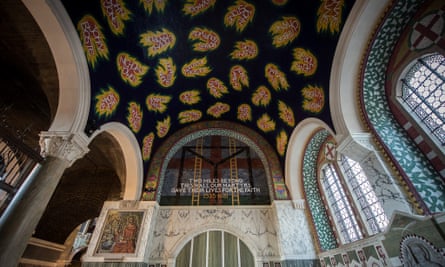
By 1969, Phillips had produced not just a sumptuous book version of A Humument, but had composed and performed an opera called Irma, inspired by passages from the text. “Mallock’s story is operatic,” he says. “And some of his original lines are very singable. So I made them sing.”
I get a sense of Phillips’s musical sensibility when, as we chat, he places on the table a special hourglass that he commissioned. Its blue sand takes precisely four minutes 33 seconds to fall – a homage to John Cage’s silent piece of music of the same duration. The late American composer was one of his heroes. Phillips, when he was teaching in the 60s, got him to lecture at Ipswich for a £40 fee and, indeed, Cage’s prepared pianos are clearly precursors of A Humument, which Phillips subtitled “a treated Victorian novel”.
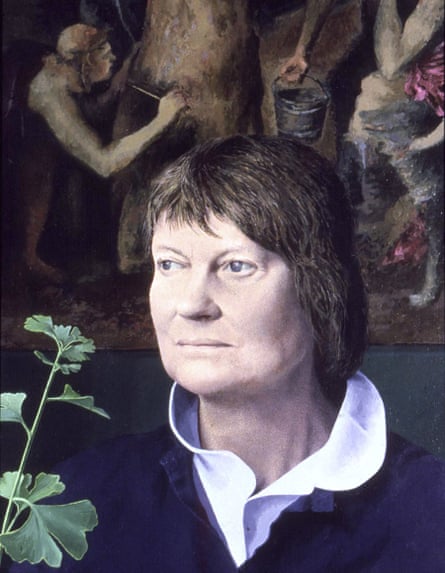
In 1973, Irma mutated from opera to gouache, when Phillips painted a series of portraits of A Humument’s heroine called The Quest for Irma. She had become a creative imagining of the original character, a projection of the artist’s quest for unattainable beauty. In 1978, Eno produced a recording of Irma for Obscure Records directed by Gavin Bryars with a cast including composer-pianist Howard Skempton and Phillips himself.
Phillips continued to labour on A Humument, ultimately producing six different editions and an iPad app. In so doing, he inspired several artists, including Jonathan Safran Foer, whose 2015 cut-up book Tree of Codes did to Bruno Schulz’s The Street of Crocodiles what Phillips had done to Mallock. Phillips’s aim was never to obliterate the book; in fact, he has effectively retrieved it from obscurity. “What I bought for threepence would now cost you £300 on AbeBooks,” he says.
“I worked on A Humument for 50 years until I decided to stop last year.” Why stop then? “Well, I’d done two versions, each taking 25 years. I could imagine doing a third, but that would have taken another 25. So I’d be a dribbling 105-year-old. More likely dead, before I finished it. So it was time to stop.”
It must leave a hole in your life. “It is,” he concedes, “a melancholy thing.” After finishing A Humument, he was asked to be a Man Booker judge for this year’s prize. “The request came at the right time. I had to read 130 novels for the longlist, which took my mind off.” But if Phillips has let go of A Humument, it hasn’t finished with him. We are meeting because next month, two admirers of it, opera director and designer Netia Jones and experimental musician Anton Lukoszevieze will stage their interpretation of his opera Irma at the South London Gallery, round the corner from his home and where he first exhibited as a Camberwell Arts College student in the early 60s.
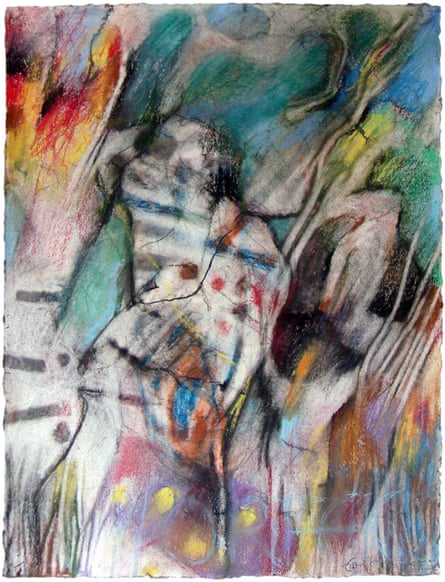
We walk to the gallery for lunch. Quite possibly we’re following the route he and Kitaj took all those years ago. Your manor’s changed since those days, I suggest. “Gentrification? That’s down to me,” he says. In 2000, he and fellow Peckham artist Antony Gormley worked on Southwark Council’s Peckham Renewal Project, designing lampposts, pavements and bollards for nearby Bellenden Road. He hands me a DVD, which turns out to be Jake Auerbach’s film record of Phillips’s annual pilgrimage: since 1973, each spring he’s walked a nine-mile circuit around his south London home taking photographs of 20 specific places to record how his neighbourhood has changed.
Phillips has never left this south London stomping ground for long. Born in 1937 in Clapham, he played bassoon and violin in his grammar school orchestra, studied English at Oxford and took life drawing lessons at Ruskin college. He taught English in Brixton while taking evening classes in life drawing from (Jake’s father) Frank Auerbach at Camberwell College for Arts. He taught at Wolverhampton and Ipswich, before being sucked back into SE15’s vortex. The house he lives in his mother bought in 1953 for £500 (her ashes are in a pot he designed under the ginkgo tree outside) – it’d sell for more than £1m now.
Restaurant staff at the gallery know Phillips well and serve him his favourite dish – Double Bubble (bubble and squeak artisanally reconstituted into what, in today’s Peckham, are probably called timbales) and red wine. It’s in the adjoining gallery that Phillips’s opera Irma will get its first multimedia performances. Visitors will be able to see an audiovisual installation during the day followed by hour-long evening performances.
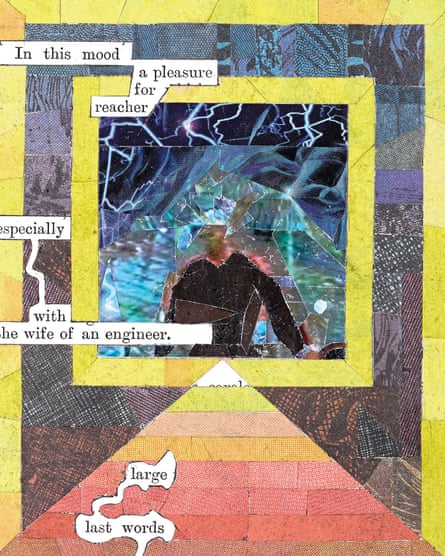
Jones and Lukoszevieze are working from a graphic score Phillips made of the opera. Graphic notation, in case you’re wondering, is the representation of music through the use of visual symbols rather than traditional musical notation. Phillips’s graphic score, which started out as one sheet but in 2014 mushroomed into a lovely book, is a work of art in itself. “I’ve no idea what they will make of it,” he says.
“For me, Tom is the anti-Samuel Beckett,” says Jones. “Where Beckett tells the director exactly what to do, Tom just gives you suggestions and so utter freedom.” Lukoszevieze plans to perform Irma with singers, a piano quintet and a synthesiser. The cellist, artist and founder/director of the experimental music ensemble Apartment House will construct the performances as an hour-long palindrome, he explains, riffing on Phillips’s 1993 piece Palindrome. “The singers won’t be singing backwards but you’ll have the sense of everything coming back in the second half-hour. I’m not going to be adding any notes or pitches Tom hasn’t already written; I’ll just be arranging his notes in a certain order.” He is planning to include a segment from Wagner’s Ring cycle as a nod to A Humument as Phillips’s Gesamtkunstwerk.
As we walk back to his house for photographs, I ask Phillips if he would consider returning to portrait painting. “No. I did 100 portraits and that was enough. I loved a lot of it, painting people like Iris Murdoch. But, oh, painting captains of industry! Never again.” Enviably, for someone in his ninth decade, he is fired up with ideas. He’s seeking approval from TS Eliot’s estate to make an illustrated edition of The Waste Land for the Folio Society. He hopes some of his projects will outlive him and that his son will carry on his tradition of taking spring photographs of Peckham’s evolution. And that, fingers crossed, artists of the calibre of Jones and Lukoszevieze will continue to work on his masterpiece A Humument. “I’d like that,” he says.
- Irma is at the South London Gallery, London SE5, on 16 and 17 September. southlondongallery.org.
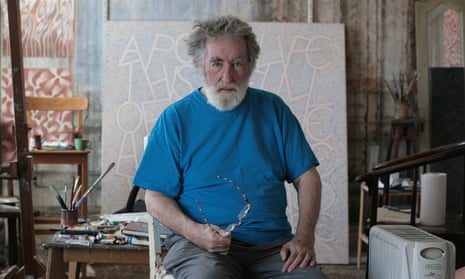
Comments (…)
Sign in or create your Guardian account to join the discussion